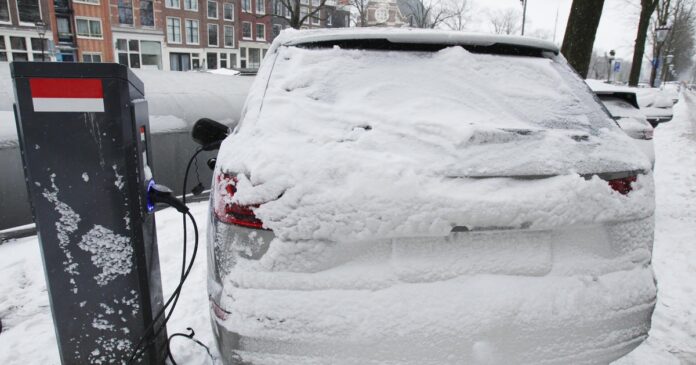By Aarav Sapra
With Chicago temperatures sinking sub-zero, electric vehicle charging stations have become crowded with dead robots, depleted batteries, and anxious owners. Electric cars are prone to do less well in cold temperatures, mainly due to the chemical reactions that create power in the battery slow down in cold weather. Although most electric vehicle (EV) owners face a shortage in range in the winter, Chicago makes it even harder for EVs. Chicago and other parts of the US face a similar snowstorm that is expected to be dangerously cold. Most owners are frustrated and can’t believe their EVs are dying within minutes, even with 30-60 miles of range. Another owner of a Chevy Bolt was worried about being stuck with a stranded battery again and had done nothing but charge his car for the past three days. Wind chills have continued to plummet below negative 30 degrees across the Chicago area and are expected to continue throughout the week, making it worse for most people as they’ll be stuck charging their cars.
This issue has also raised the question whether the EV industry can take over gas cars. Considering the recent problems with the range in cold weather or simply battery depletion, this makes people reconsider their decision to purchase an electric vehicle. Another massive factor for the loss of range is that many EVs lose their battery because the car uses a large amount of electricity to heat the cabin, limiting the available range. Although automotive companies share tips among customers on limiting the impact of a depleting battery, dead cars are still crowded everywhere in Chicago. These factors combined to create a frustrating experience for many electric vehicle owners. Once again, this situation has repeatedly received significant media attention, raising concerns about the reliability of an EV in cold weather and the status quo of the charging infrastructure and may conclude that gas stations may still be here.
However, despite these challenges, companies can improve their cars and batteries and increase the charging stations available to the general public. In addition, educating drivers about strategies to make their EVs the most efficient can help alleviate range anxiety or involve cities in creating more charging stations available to the public or spending money on the EV industry. By addressing these challenges, there is potential that EV manufacturers can ensure that their vehicles are genuinely capable of all-weather use, but it may take an extended amount of time, so it’d be better if you stuck with your gas car and not have to worry about waiting in long lines to charge your vehicle.

